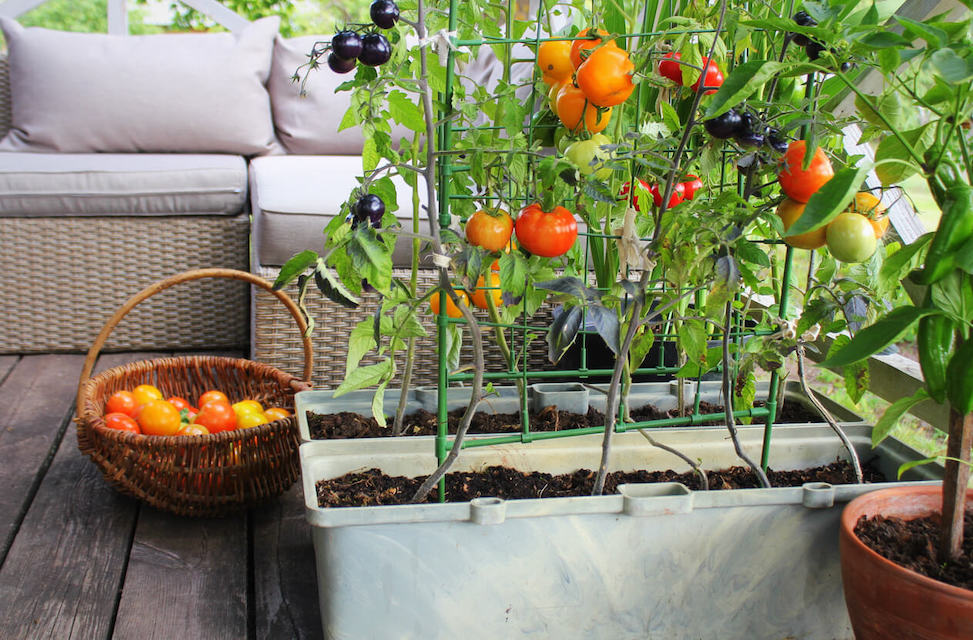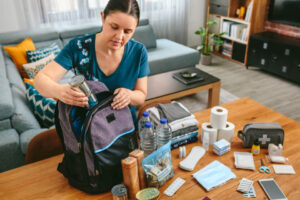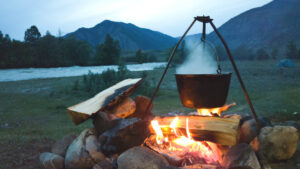
Growing your own food is a great way to practice self-reliance and keep yourself fed during a food shortage or other emergency. But where is the best place to plant your survival garden? Learn about the differences between growing an indoor or outdoor garden. Then, you can decide which option is best for you and your survival plan.
Indoor Gardens: Food to Grow Inside
You don’t have to have outdoor space to have a garden. Here are a few benefits and drawbacks to growing food inside.
Pro: It’s Easy to Grow Herbs Indoors Year-Round
It’s easy to have either an indoor or outdoor herb garden in a small space. But an indoor herb garden keeps them close to where you use them: the kitchen! Herbs can add fresh flavor to any dish and give you lots of benefits without taking up much space. Make sure your pots and containers have drainage holes, and use high-quality soil. Save money by buying seed packets and starting plants on your own.
Con: You Need to Keep Things Tidy
An indoor garden brings dirt into your house. Soil and water can make big messes inside your house. You may also need to dust your plants and treat them for indoor pests like gnats or aphids. Also, you’ll have to keep indoor plants away from pets for safety.
Pro: You Have More Control Over the Growing Environment
With an outdoor garden, you’re at the mercy of Mother Nature. Animals or pests might eat your crops. Weeds might choke out your plants. Rain or drought might affect the health of your plants. Indoors, you can keep the environment stable. You choose when you water your plants, and you can provide more light as needed. Not having to pull weeds is a great perk, too!
Con: You Have Limited Space Inside for Larger Plants
Important survival foods, like beans, need a lot of space to grow. An indoor garden won’t have space for plants like large squash varieties or climbing bush beans. There are several vegetables that grow well indoors. But you’ll have to plan your space carefully to maximize it. You will also probably need to supplement natural light with a grow light.
Outdoor Survival Gardens: Easy Food Plants to Grow Outside
Unlike indoor gardens, outdoor gardens can offer you more space. Some vegetables can technically be grown indoors. But, many of them grow better outside.
What are the easiest vegetables to grow outside? Peas, carrots, radishes, cherry tomatoes, and squash are great for beginners. Salad greens like lettuce are easy, too, if you have space for them. Bush beans are also perfect for a novice vegetable garden. Plus, beans can quickly be dried and stored in your survival stash.
Outdoor gardens obviously get more sunshine and natural humidity to encourage growth. But they’re also susceptible to damage from storms and wildlife. Their success also depends on the quality of your soil. If your yard doesn’t have good soil, consider gardening in raised beds.
When to Start a Garden Indoors
Buying established plants is expensive! No matter where you choose to plant your garden, consider starting the plants inside by yourself. You’ll need seed packets, seed starting soil mix, and containers. In early spring, plant your vegetable seeds in your soil mix. Make sure they have plenty of natural light and face a window, or use a grow light to help seed germination. You can transfer them outside once they’re mature enough.
Need to know when to plant your garden indoors or outdoors? Consult with an age-old resource: The Farmer’s Almanac. Enter your zip code in the Farmer’s Almanac planting calendar. You’ll see optimal seed starting dates, outdoor planting dates, and average last frost dates in your area. For an outdoor garden, don’t transplant your young seedlings outside until after the last frost.
Find Everything You Need for Your Indoor or Outdoor Survival Garden
No matter if you’re growing a garden inside or outside, 4Patriots is here for you. Shop home and garden tools, indoor gardening kits, herb seeds, and more online, and put your green thumb to the test.

